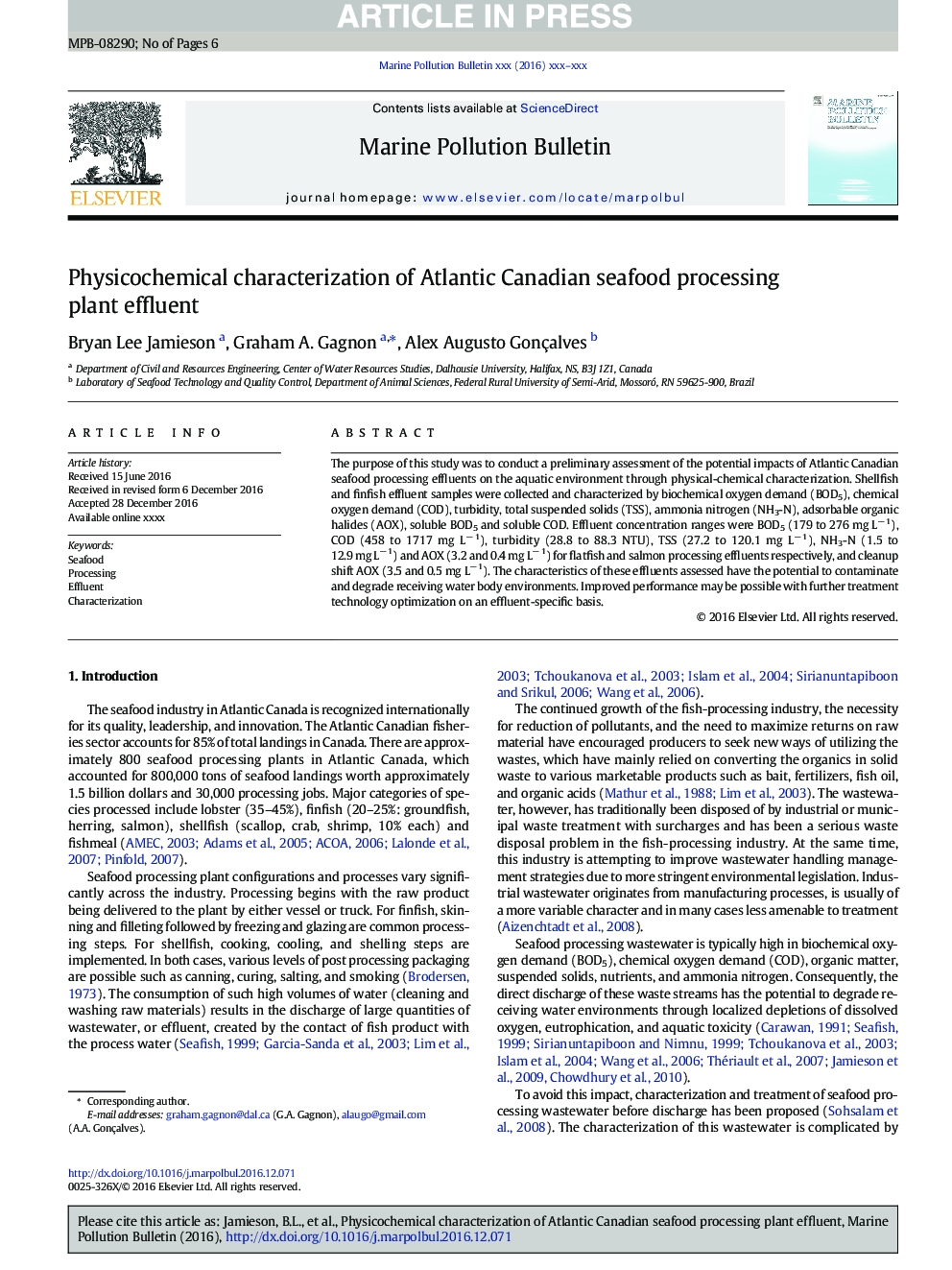| Article ID | Journal | Published Year | Pages | File Type |
|---|---|---|---|---|
| 5757591 | Marine Pollution Bulletin | 2017 | 6 Pages |
Abstract
The purpose of this study was to conduct a preliminary assessment of the potential impacts of Atlantic Canadian seafood processing effluents on the aquatic environment through physical-chemical characterization. Shellfish and finfish effluent samples were collected and characterized by biochemical oxygen demand (BOD5), chemical oxygen demand (COD), turbidity, total suspended solids (TSS), ammonia nitrogen (NH3-N), adsorbable organic halides (AOX), soluble BOD5 and soluble COD. Effluent concentration ranges were BOD5 (179 to 276 mg Lâ 1), COD (458 to 1717 mg Lâ 1), turbidity (28.8 to 88.3 NTU), TSS (27.2 to 120.1 mg Lâ 1), NH3-N (1.5 to 12.9 mg Lâ 1) and AOX (3.2 and 0.4 mg Lâ 1) for flatfish and salmon processing effluents respectively, and cleanup shift AOX (3.5 and 0.5 mg Lâ 1). The characteristics of these effluents assessed have the potential to contaminate and degrade receiving water body environments. Improved performance may be possible with further treatment technology optimization on an effluent-specific basis.
Related Topics
Physical Sciences and Engineering
Earth and Planetary Sciences
Oceanography
Authors
Bryan Lee Jamieson, Graham A. Gagnon, Alex Augusto Gonçalves,
